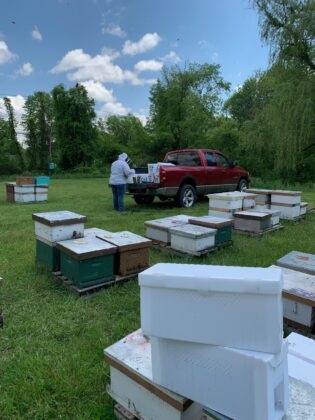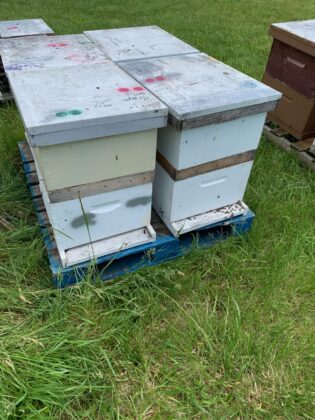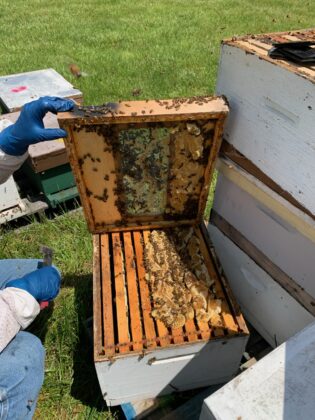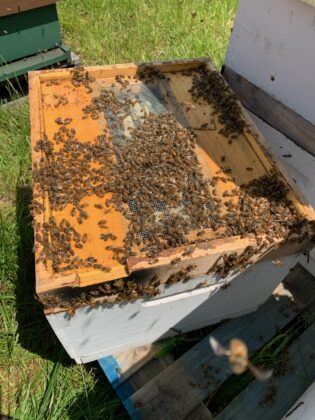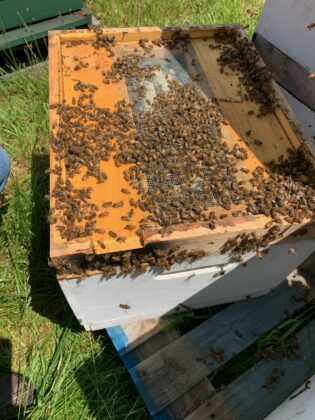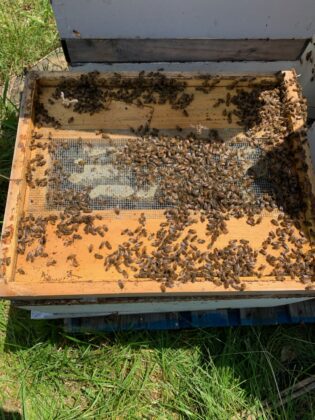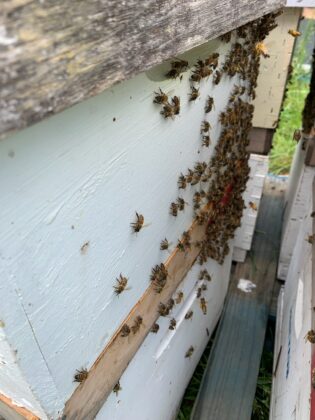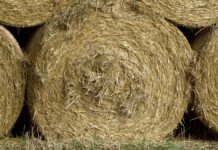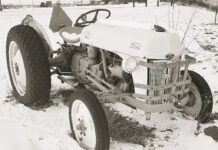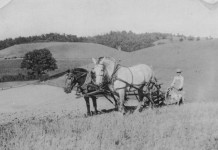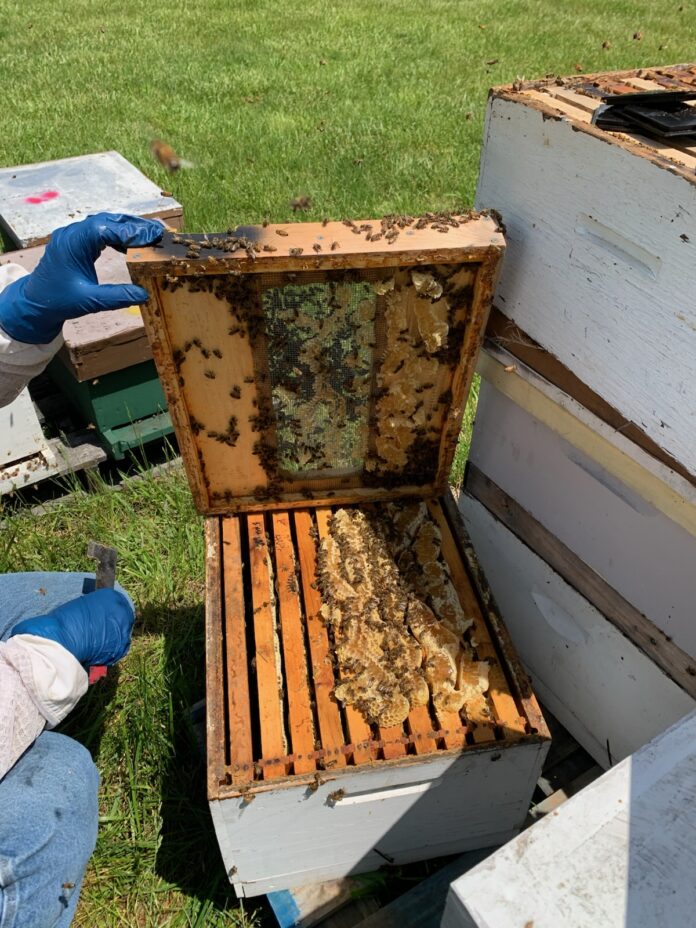
Splitting honey bees can be as simple as removing the queen and three to four frames of brood and bees to another box or as complicated as building a cell builder and grafting larvae into plastic queen cups.
The walkaway split
The walkaway split is exactly as it sounds and is probably the easiest method of splitting bees. Remove your queen with three to four frames of brood with plenty of bees attached to the frames and install it into a new box. Find frames with a lot of capped brood because these frames have the most new bees ready to emerge and will support the new hive to grow faster. Frames of honey and pollen are also important because most of the foragers will return to the old hive if you locate the new split in the same bee yard.
Always put in more bees in the new hive when splitting, because a lot of the foragers are out in the field. You may assume you are splitting too heavily in favor of the queen split, but there will be a lot of foragers returning in the evening to the original hive.
Place the remaining open brood in the center of the old hive, and the new frames of foundation to the wall or outer frame positions. It is important you leave one to two frames of open brood larvae or eggs in the original box so the bees can make their new queen. They must have an egg or a one-to-two-day-old larva to convert into a queen. You can help the process by taking your hive tool or pocket knife and scraping some of the cells downward, which will allow the bees to make a bigger queen cell by opening the space below a couple of cells they may select. The bees may or may not use that area, but they will decide and choose what larvae they like best to work with.
You can go back into the hive in two to three days, and you will see the formation of the queen cups and the larvae inside. They will make multiple queen cells in different locations, sometimes on different frames, and you can harvest extra cells by removing them with your knife in about 10 to 12 days after you split the hive. These cells must be kept warm and upright and either be used immediately in a new split or placed in an incubator at 94 F to hatch out.
You can simply use these cells by placing them on a frame and adding a little soft wax or burr comb to keep it in place on the frame. Generally, in 14 days, the new virgin queen will emerge and quickly go to work killing all the other queens in their cells by stinging them. The first queen out will hunt down any other emerged queens, and the victor will take over the old hive. It will take an additional three to four days for her to get mated and another two to three days for her to start laying eggs. As a general rule, count on 14 days for the new queen to emerge and an additional seven to 10 days to start laying.
Double screen boards
The double screen board is a great tool when making splits in early spring, when the nighttime temperatures can range in the low to mid-40s. As I write this in mid-May in northeast Ohio, the entire week is forecasted to have lows in the mid-40s range. This cold temperature can be fatal to small splits that do not have enough bees to cover their brood. They will succumb to chilled brood that will set back your production efforts.
The double screen board is a wooden spacer that has open screen in the center to allow the lower hives’ heat to move upward and warm the split above it. This screen is placed between the two deep bodies, effectively making two hives with a shared bottom board and a shared cover. The double screen with the space between it is necessary so the bees in the two hives cannot touch and interact with each other and trade pheromones, thus effectively making it a separate hive with a separate opposite entrance. The heat generated from the lower original hive warms the upper hive and utilizes their heat to help keep the upper hive’s brood warmer.
You can utilize this double screen on an original double deep hive in your yard and make an effective split. It is recommended that you find the queen and place her in the top box with the opposite entrance. This again is because a lot of the foragers will return to the bottom hive because they are oriented to this hive. The young nurse bees and the new emerging bees will accept the top box as their new home. The downside of using this split is that you will eventually have to take the top box and put it into its own bottom board and top, which is easily done by transferring frames or selling the nuc as it gets larger. The double screen board allows the beekeeper to better manage and protect early season splits from cooler weather and is a useful tool in swarm control.






